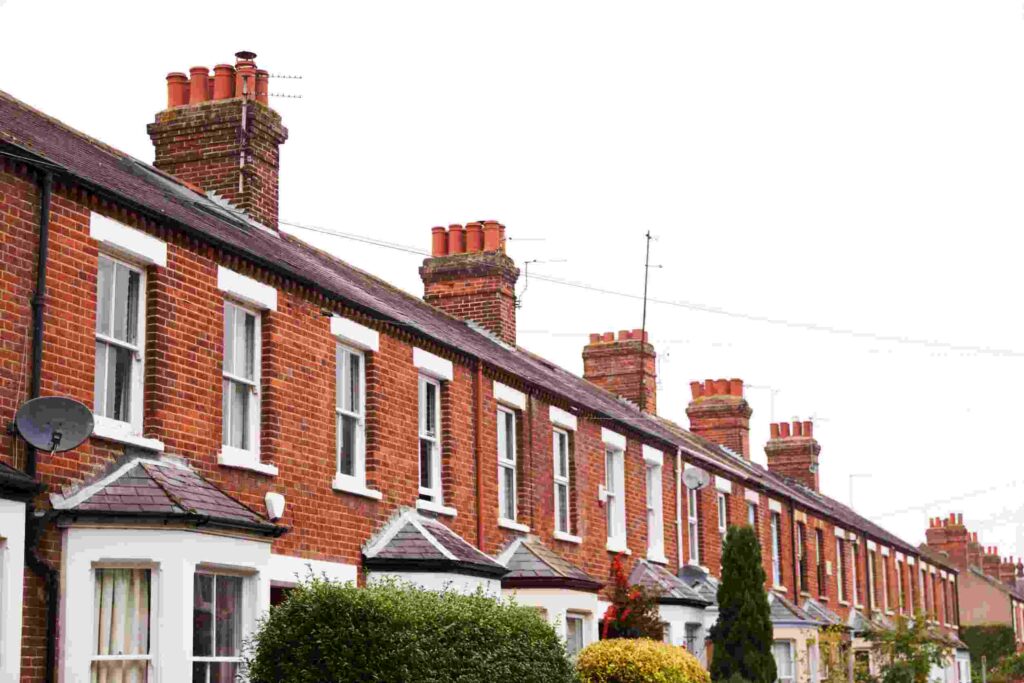
If you’re considering buying a terraced house with plans to renovate it, you’ve come to the right place.
Between July and September alone in 2022, the UK Planning Portal received 99,200 applications for planning permission, showing that a huge proportion of homeowners are set on making improvements to their houses.
You might be doing it as part of a personal DIY project, or you might be in the real estate business. Either way, you need to be prepared to tackle the legal and engineering side of buying and doing up a terraced house. Here’s what you need to know.
A Look at The Market
Trends show that terraced houses have grown in popularity over the past few years – and there are several reasons as to why this might be the case.
Firstly, terraced houses are generally considered one of the more economical types of housing. They’re often the perfect size for individuals, couples or small families and because they’re not too big, they’re less demanding to heat and insulate in the winter. Plus, the neighbouring houses can help to retain the heat – especially if it’s a back-to-back terraced house, where you can benefit from three heated homes at once.
In the UK, house prices are hitting a record high, which means that people have less housing options available to them. This has been heightened with the increase of energy bills and cost of living crisis. Detached and semi-detached houses with gardens and off-road parking tend to be a lot more expensive than terrace houses and are out of many first-time buyers’ budgets. When buying your first home and trying to get onto the property ladder for the first time, a one or two-bed terraced house is a natural first choice and particularly when you take flats out of the equation.
Another reason why they’re such a popular choice is the old-school charm they bring. Terraced houses in the UK were first built in the late 17th century, which means that many have unique features you simply won’t find in more modern, new-build houses. Many people bring out this character with sensitive renovations.
Structural Integrity of Terraced Homes
While the historic charm of terraced homes can be appealing to many, there are certain structural issues you’ll need to be aware of. With many being well over 100 years old, this means that the structural integrity of the building can be compromised due to general wear and tear. On top of this, outdated knowledge or technology can mean that the building is no longer in its prime condition and particularly if you are buying from previous owners who may have neglected the property in this sense.
Damp can result in a more frail structure and can form in different ways. Rising damp seeps upwards into the structure and ‘bridging’ can be created due to ground levels being raised over the years. If it isn’t already in place, it’s common for homeowners to invest in a damp proof course (DPC) when renovating to help limit these issues. Penetrating damp often results from rainwater penetration in properties built with relatively soft brick. If you’re extending a Victorian property, a lack of consideration for sub floor ventilation can create issues further down the line. Moisture can build in the subfloor itself if ventilation is cut off, which, if left unattended can cause the floor timbers to decay. On top of this, condensation caused by insufficient glazing or poor installation of the windows in the property can create a damper, colder environment.
Confirming to Regulations When Renovating
Anyone wanting to proceed or renovate their terraced house will need to be clued up on any regulations that may be in place, as well as whether planning permission is required. While some properties are considered ‘permitted developments’, which means that planning permission isn’t required, others will require an application to your local planning authority (LPA) through your local council.
This might be the case if you plan to extend the building by a certain length that exceeds those stated in permitted development regulations or if your renovation plans compromise your neighbours’ living standards. Make sure you consider any building regulations in your renovation plans too, as anyone completing the work will need to comply with these, otherwise they face fines and prosecution. For example, the house must be habitable and align with sufficient fire safety, heating and ventilation standards. These regulations are in place to foster sufficient liveable standards in the house and have been designed with health and safety in mind.
Extensions to Terraced Properties
Extensions are a great option for anyone looking to upgrade their property without the hassle of moving house. This means you can avoid compromising on a great location or a house you’ve made feel like home. Most obviously, a house extension can also add value to your house. You might want to consider getting extension insurance to make sure you are covered in the event that something goes wrong.
Terrace extensions may feel a tad overwhelming, as no one wants to compromise the relationship they have with their neighbours. But don’t panic – if you follow the right procedures, you’ll be perfectly within your rights to make any planned improvements to your terraced house. Having said this, consideration for how your plans might impact your neighbours’ quality of living is important, such as an intrusion on their privacy or the amount of natural light they receive. Party walls stand on the land of two or more owners and ‘party wall agreements’ are there to inform your neighbours about any building work you plan to carryout on your property.
Loft Conversions on Terraced Properties
To maximise the space in a terraced house, many people opt for a loft conversion. Often, these are turned into an additional bedroom, which can greatly benefit the value of your house when it comes to selling it. They can also come in handy as workspaces as well as general storage areas in the home.
Loft conversions are usually considered a permitted development, meaning you don’t need to get planning permission, so long as the plans fit the right criteria. However, if you plan to make more rigorous changes that go beyond the listed criteria, such as expanding the roof space beyond its existing boundaries, you’ll need to seek planning permission.



